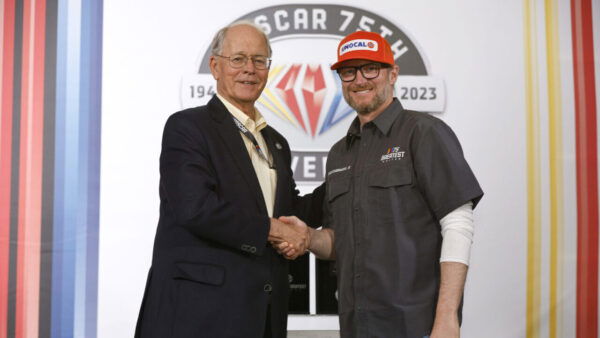When Sebastian Vettel tested out the cockpit shield as the FIA considered alternatives to the halo

Sebastian Vettel tested the F1 shield cockpit during the 2017 British Grand Prix
Safety is a priority in Formula 1. Drivers like Sebastian Vettel and Lewis Hamilton had called for enhanced safety standards in the sport since Jules Bianchi’s death after the 2014 Japanese Grand Prix. Over the years as technology progressed, the sport also brought innovations to make it safer for the drivers who risk their lives every time they get in an F1 car. The cockpit shield was one of the ideas floated around when the FIA looked to introduce a safety structure to protect the driver. It was among the three devices in the running, the other two being the now-used Halo and the Red Bull aero screen.
The shield was a wraparound screen that was designed to prevent drivers’ helmets from being hit with incoming debris, as well as to protect the driver during a heavy collision. Sebastian Vettel was given the task to drive with the device in a free practice session at Silverstone during the 2017 British Grand Prix. The device seen on track for the first time by the whole world garnered immense intrigue as the paddock debated over the aesthetics of the cockpit shield.
However the German was not fond of this new shield, complaining about the distorted vision due to the screen’s curvature and stating feeling dazed after taking the car for a spin, Vettel said, “I got a bit dizzy.” Sebastian Vettel and Scuderia Ferrari had a planned run with the cockpit shield but the four-time world champion was forced to bring the car in and get the device off the car to have stable running. this was noted by the sport’s governing body which wrote off the shield from further consideration and decided to bring in the Halo from the 2018 Formula 1 season.
Fans remember Sebastian Vettel’s short run with the shield in 2017

When a picture from this run resurfaced on Reddit, fans had a divided opinion regarding the looks of the cockpit protection structure, some appreciated the design, with one user calling it a “jet fighter on wheels” while another fan replied, “I think it looks better than the Halo.” One user called the shield, “Ugly, very ugly” while another user stated, “thankfully that wasn’t used that looks horrific.” One fan mentioned how they would not mind F1 using this device considering, “they appear to be overall safer.” Thus it seemed that fans were not so bummed after Sebastian Vettel‘s failed run.
Safety structures are not meant to be visually appealing, they are meant to protect the driver, and that is exactly what the Halo has done on countless instances since 2018, saving numerous lives as well as preventing severe injuries. However, safety can always be improved, and as such F1 can reconsider alternatives to further increase driver protection. This cockpit shield or even the aeroscreen which is now used in IndyCar can stop small debris from entering the cockpit, a vulnerability of the Halo. Thus there are virtually no limits in looking for safer options for the sport.







